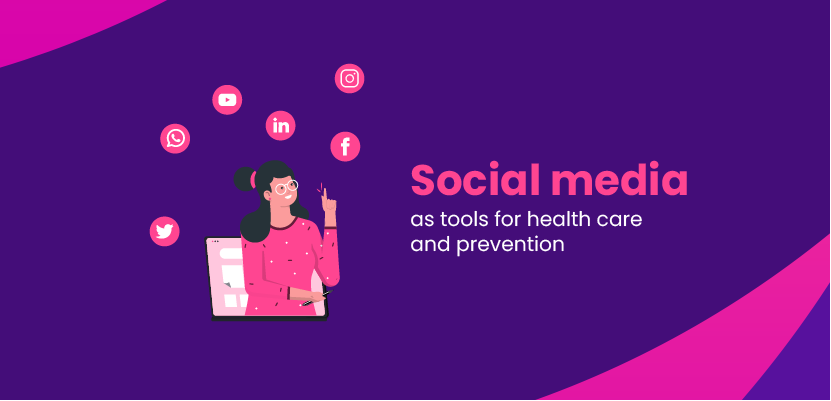Top Critical Security Tips for Web Development in 2022

Jakub Turkowski
Cyberattacks are something that you probably think is to happen to someone else, not your business. The times when hackers were targeting only enterprise level businesses are gone now. Every company has to take precautions. Last year, there were over 623 000 000 cases of ransomware attacks in the world. In the first half of 2022, there are over 236 000 000 cases reported. It may seem that the numbers are going down, but this is still a serious concern. Take a look at the statistics related to cyber crime impact on business worldwide in 2021 – you better be prepared. But what is web application security? What can you do? Keep on reading, we will help you understand the importance of web development security.
Web security – why is it important?
First of all, a cyberattack means high costs for your business. How much exactly? Well, we won’t give you a precise estimation, but here’s IBM’s report that will provide you a better overview. According to that data, an average cost of data breach in 2021 was around 4 240 000 USD – that is surely something you would want to avoid. Apart from financial loss (especially in cases of ransomware attacks), your company also loses more than money in case of a cyberattack. It’s reputation – and this is crucial, as every business partnership is based on trust. That’s why you cannot afford to be unprepared.

Web security threats – what you need to know
Thousands of threats are out there on the web. Seriously, it is said that there are around 600 000 new malware threats cases daily – and that is real. It’s impossible to provide detailed information about every single case in one article, so we will keep the story short. What are the most common website threats you should look out for? See below.
Ransomware attacks
Your computer locked and all data encrypted? Yes, that can be just a click away. Ransomware attacks cause massive damage to companies all over the world. According to Cybersecurity Ventures, that damage is going to reach the level of 265 000 000 000 USD in 2031. Just imagine – you and your team spend a few intense months on a project. Everything is almost set up and ready to bring you profit, and then suddenly – all rigs in your company are locked and data is inaccessible. This sounds like a script of some horrifying movie, but it’s not – that kind of thing happens every day. Ransomware is usually spread by malicious software or infected email attachments, so the good news is that you can avoid the attack by educating yourself, your employees, and having pros in your IT department.
Phishing
You think it is easy to spot an imposter? That’s what every victim of phishing thinks. It is really possible to miss a typo in the email address. And that’s what you should look out for. Phishing emails lure the unaware users to websites that look like exact copies of the real ones. This is where the users share sensitive information and lose money. It’s nothing rare – according to Cyber Talk, there are around 15 000 000 000 phishing emails sent every day. What’s frightening is that around 30% of them are opened. 83% of organizations reported experiencing phishing attacks in 2021. This is a serious threat.
Cloud-based attacks
That is the topic that should be taken very seriously. Due to a shift in the world, caused by the pandemic – remote work is now a global thing. And remote work is based on cloud solutions. So, anyone is at risk now. What are the types of cloud-based attacks? Many, but you should be aware of these two in the first place.
SQL injection attacks
Also known as SQLI – these cases happen when cyber criminals use the SQL code to mess with the databases’ backend. This results with accessing private and sensitive information – from email bases to really crucial business data. This may lead to a situation when hackers take over control of administration of web applications databases. That’s a serious danger.
Cross-site scripting
Also going by the name of XSS – this is a type of attack that works similar to SQLI. A malicious script is placed on a website by hackers, and with that in place – they can intercept the user’s private data. How? The script is executed in the victim’s browser.
Check out this report from OWASP, to know more about top 10 web application security risks.

Web development security – best practices
As you can see, there are loads of threats waiting to cause serious damage to your web application. We have some good news – there are best practices that will help you in case of a crisis. Some of these practices are helpful in terms of preventing an attack, some (usually at enterprise level) are helpful when an attack is already a fact. Be aware, as – according to the mentioned IBM report – it takes an average 197 days for a company to discover the data breach, and up to 69 days to contain it. That translates to massive damage – in terms of long tail damage (finance, legal, reputation, and more).
By the way – did you know that we take security very seriously? So seriously, that we earned ISO9001 & ISO27001 certification. That means you can trust us – your project is in good hands when you establish a partnership with itCraft. So, having that said, let’s move to the core – what are the tips for secure web development?
Top security tips for web development in 2022
Educate your employees
This might sound easy, but most of the cyberattacks are successful thanks to the human factor. No application is 100% secure, but the point is that web apps are created for people – they use them. So, providing a proper education in terms of general security standards awareness training will help your employees avoid attacks. And this will save you a lot of money.
Manage the permissions
You probably don’t have an idea how many accounts with important permissions are not disabled when an employee leaves a company. This is something that should be automated. Also, it is vital for your business to provide a minimum of required permissions to a user – we mean permissions required to perform daily activities at work. This will pay off, trust us. In case there is a need for granting special permissions, this should be temporary.
Multi-factor authentication
These days, users should be aware of creating strong passwords. It may be the other way around, and people still use their pets’ names or any other easy-to-guess stuff as passwords. To prevent the damage, implement an extra security layer – a multi-factor authentication. It could be a token or a facial recognition system, or something else. Consider it as an investment in security, not as an unnecessary cost.
Monitoring anomalies
This one is usually missed somehow. Do you have an antivirus system on your private device? We bet you do. So, have something for monitoring in your company. But this is not about having a monitoring system, it’s about reacting to alert – you better make sure that there are people onboard that will check every potential breach. Remember the IBM report? 169 days – don’t make it that long, or you will pay a lot.

Security audits
This is often perceived – as some of other tips listed here – as an extra cost for your company. Yeah, if there were no data breaches in the past (or you did not discover any) it does not mean that they are not going to occur. It’s better to prevent than to cure – so, conducting security audits on a regular manner will help you spot the weak points in your cybersecurity system. Include penetration testing – it is required by the GDPR.
Manage the vulnerabilities
Does your IT team remember to adjust the firewall rules? Do they take care of system upgrades and patches? How about technology deprecation? Do you consider changing your services provider for a more modern one? Hey, all these things add up to your security. We know that all people in your business have tight schedules, and it’s easy to miss these matters. Be sure to include these topics in the to-do list.
Plan B – in case of crisis
One thing is for sure – in case of data breach, the first reaction is usually panic. If you have a detailed plan with precise steps, you can reduce the damage. Seriously, think of it this way – why are there escape plans in case of fire? To reduce the risk of someone getting hurt (or worse). The same applies for web development security – you need a strategy in case of disaster.
Work with professionals in IT industry
A team of experts will help you save money – it’s better to use their experience and knowledge to prevent the damage from the very beginning. Did we mention that we have the ISO9001 & ISO27001 certification? Be sure to establish a business partnership with pros (yes, us) – we care about your security. We build our reputation on trust. Got a project? Let’s talk!
Read also
How mobile applications are fueling digital transformation
What is a mobile app?
UX Laws & Principles – Part 1






